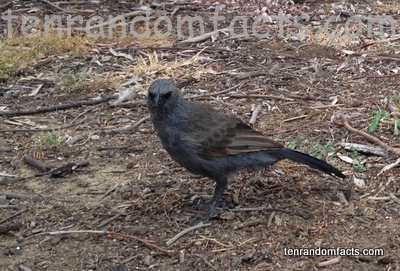The apostlebirds are preaching in the mornings.
- Apostlebirds are birds native to inland eastern and southern woody habitats of Australia.
- ‘Apostlebirds’ are also known as ‘grey jumpers’, ‘lousy jacks’, ‘family birds’, ‘happy jacks’, and a group of them is sometimes called ‘twelve apostles’ or a ‘happy family’.
- Typically, apostlebirds have plumage that is mostly grey in colour, with touches of brown and black in various places.
- The scientific name of an apostlebird is Struthidea cinerea, and it is from the family Corcoracidae, also known as Struthideidae, the family of Australian mudnesters.
- Apostlebirds coexist helpfully in groups, actively caring for fellow birds, eggs and chicks, and all contributing to nest building.
- Female apostlebirds generally lay two to five very light blue to white coloured eggs, that have brown or grey coloured specks, and they are laid in a high, mud and grass nest.
- The name ‘apostlebird’ is derived from the twelve apostles of Jesus Christ, as the birds usually live in groups that number ten to twelve birds.
- The diet of apostlebirds consists primarily of insects and vegetation, such as seeds and leaves.
- Apostlebirds grow to lengths of 29 to 33 centimetres (11.4 to 13 inches), and weigh approximately 128 grams (4.5 ounces).
- Apostlebirds are often seen foraging on the ground in their family groups, and in winter a number of groups may congregate together.






One of my favourite birds!
Same!!! I just love the little characters!
I have have often associated with Happy Jack’s, in topend and inland Australia and nested in my yard, in Charters Towers.
Beautiful little fellas but keep eating the fly screens and shitting on the house walls, any ideas of how I can deter them.